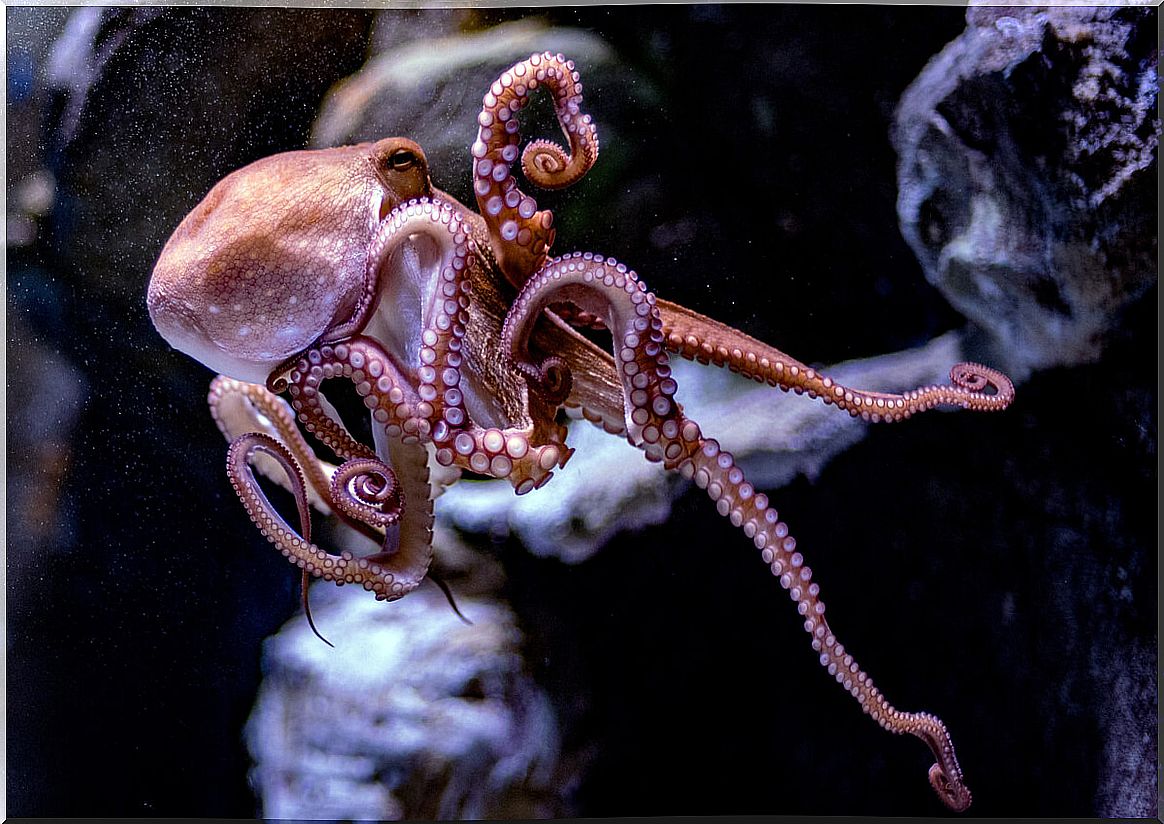How Many Brains Does An Octopus Have?

It’s no wonder some scientists wonder if these fascinating invertebrates are aliens. Octopuses, with their enormous intelligence, are certainly different from us, but what is special about the octopus brain compared to the rest of its organs?
As you can see, saying that an octopus has more than one brain is somewhat inaccurate, but arguing that it only has one is also incorrect. Has your curiosity been piqued? Read on for an answer.
The nervous system of octopuses
As you may know, the nervous system of living things is made up of neurons. In a human, the bulk of these cells are concentrated inside the skull – in the brain – branching out to the rest of the body to send and receive nerve signals.
It is the brain that processes the stimuli from the environment and sends the corresponding orders: movements, decisions, emotional reactions and a thousand other things. A brain is a processing and decision center. Easy, right? Well, in the case of octopuses it is not so simple: two thirds of their neurons are distributed between their 8 arms.
That is, if these neural networks were brains proper, we could say that the octopus has 9 of them. This means that each tentacle is effectively a stimulus processing and decision-making center. Let’s look at this concept in more detail.

The conflict in the octopus brain
The 8 arms of this cephalopod, in short, have their own autonomy. When it comes to solving problems, both the neurological centers located in the head and those in the arms can intervene.
To give you an idea of how complicated this can be, we leave you the most recent data on this topic:
- There are thousands of chemical and mechanical receptors in each suction cup: making an analog with the human species, it is as if we had them concentrated on fingerprints.
- Each suction cup can process information on its own: in fact, octopuses can sniff and taste through their arms. Imagine having a nose and a tongue on each finger, each of them collecting information on its own.
- The suction cups communicate with each other: they send a signal to the next when the first one finds something interesting. When this occurs throughout the entire arm, a general object scan response is generated.
- The arms pass information to each other without it reaching the brain that the animal has in its head.
As you can see, solving problems for an octopus is possible due to its great intelligence, but it may take a little longer, due to the multitude of underlying neuronal processes at the physiological level.
All of this may seem of little use, so the octopus’s brain located in the head can override any reflexes in the limbs if necessary. In this way, conflicts between the arms are not a problem for survival. To make matters worse, the tentacles recognize each other, so they never get tangled.

Conclusions about the octopus brain
Did you know all these curiosities? Octopuses are extraordinary animals, which can not only fascinate us on an experimental level, but also teach us that intelligence cannot be cut by the same pattern for all species. Whether they have 9 brains or just one spread out, they are as capable as anyone of solving complex problems.
Octopuses promise a long history of studies with incredible discoveries. We already know that they recognize their caretakers, that they use tools, that they play games, and that they suffer from mental disorders when locked up. They even distinguish and have a preference for some individuals without being gregarious. What else will there be to know about them?









